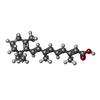Entry Database : PDB / ID : 2aclTitle Liver X-Receptor alpha Ligand Binding Domain with SB313987 Oxysterols receptor LXR-alpha Retinoic acid receptor RXR-alpha Keywords / Function / homology Function Domain/homology Component
/ / / / / / / / / / / / / / / / / / / / / / / / / / / / / / / / / / / / / / / / / / / / / / / / / / / / / / / / / / / / / / / / / / / / / / / / / / / / / / / / / / / / / / / / / / / / / / / / / / / / / / / / / / / / / / / / / / / / / / / / / / / / / / / / / / / / / / / / / / Biological species Homo sapiens (human)Mus musculus (house mouse)Method / / / Resolution : 2.8 Å Authors Jaye, M.C. / Krawiec, J.A. / Campobasso, N. / Smallwood, A. / Qiu, C. / Lu, Q. / Kerrigan, J.J. Journal : J.Med.Chem. / Year : 2005Title : Discovery of substituted maleimides as liver x receptor agonists and determination of a ligand-bound crystal structure.Authors: Jaye, M.C. / Krawiec, J.A. / Campobasso, N. / Smallwood, A. / Qiu, C. / Lu, Q. / Kerrigan, J.J. / De Los Frailes Alvaro, M. / Laffitte, B. / Liu, W.S. / Marino, J.P. / Meyer, C.R. / Nichols, ... Authors : Jaye, M.C. / Krawiec, J.A. / Campobasso, N. / Smallwood, A. / Qiu, C. / Lu, Q. / Kerrigan, J.J. / De Los Frailes Alvaro, M. / Laffitte, B. / Liu, W.S. / Marino, J.P. / Meyer, C.R. / Nichols, J.A. / Parks, D.J. / Perez, P. / Sarov-Blat, L. / Seepersaud, S.D. / Steplewski, K.M. / Thompson, S.K. / Wang, P. / Watson, M.A. / Webb, C.L. / Haigh, D. / Caravella, J.A. / Macphee, C.H. / Willson, T.M. / Collins, J.L. History Deposition Jul 19, 2005 Deposition site / Processing site Revision 1.0 Sep 20, 2005 Provider / Type Revision 1.1 Apr 30, 2008 Group Revision 1.2 Jul 13, 2011 Group Revision 1.3 Feb 14, 2024 Group / Database references / Derived calculationsCategory chem_comp_atom / chem_comp_bond ... chem_comp_atom / chem_comp_bond / database_2 / struct_ref_seq_dif / struct_site Item _database_2.pdbx_DOI / _database_2.pdbx_database_accession ... _database_2.pdbx_DOI / _database_2.pdbx_database_accession / _struct_ref_seq_dif.details / _struct_site.pdbx_auth_asym_id / _struct_site.pdbx_auth_comp_id / _struct_site.pdbx_auth_seq_id
Show all Show less
 Open data
Open data Basic information
Basic information Components
Components Keywords
Keywords Function and homology information
Function and homology information Homo sapiens (human)
Homo sapiens (human)
 X-RAY DIFFRACTION /
X-RAY DIFFRACTION /  SYNCHROTRON /
SYNCHROTRON /  MOLECULAR REPLACEMENT / Resolution: 2.8 Å
MOLECULAR REPLACEMENT / Resolution: 2.8 Å  Authors
Authors Citation
Citation Journal: J.Med.Chem. / Year: 2005
Journal: J.Med.Chem. / Year: 2005 Structure visualization
Structure visualization Molmil
Molmil Jmol/JSmol
Jmol/JSmol Downloads & links
Downloads & links Download
Download 2acl.cif.gz
2acl.cif.gz PDBx/mmCIF format
PDBx/mmCIF format pdb2acl.ent.gz
pdb2acl.ent.gz PDB format
PDB format 2acl.json.gz
2acl.json.gz PDBx/mmJSON format
PDBx/mmJSON format Other downloads
Other downloads https://data.pdbj.org/pub/pdb/validation_reports/ac/2acl
https://data.pdbj.org/pub/pdb/validation_reports/ac/2acl ftp://data.pdbj.org/pub/pdb/validation_reports/ac/2acl
ftp://data.pdbj.org/pub/pdb/validation_reports/ac/2acl Links
Links Assembly
Assembly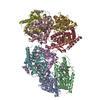
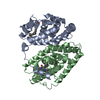



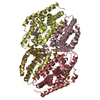

 Components
Components Homo sapiens (human) / Gene: RXRA, NR2B1 / Production host:
Homo sapiens (human) / Gene: RXRA, NR2B1 / Production host: 


 X-RAY DIFFRACTION / Number of used crystals: 1
X-RAY DIFFRACTION / Number of used crystals: 1  Sample preparation
Sample preparation SYNCHROTRON / Site:
SYNCHROTRON / Site:  APS
APS  / Beamline: 17-ID / Wavelength: 1 Å
/ Beamline: 17-ID / Wavelength: 1 Å Processing
Processing MOLECULAR REPLACEMENT / Resolution: 2.8→30 Å / σ(F): 0 / Stereochemistry target values: Engh & Huber
MOLECULAR REPLACEMENT / Resolution: 2.8→30 Å / σ(F): 0 / Stereochemistry target values: Engh & Huber Movie
Movie Controller
Controller



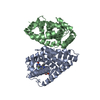
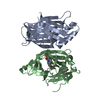
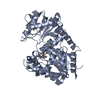
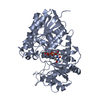
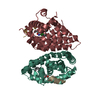
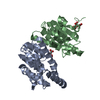
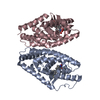
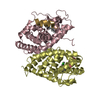
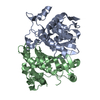

 PDBj
PDBj






